|
This information sheet is a continuation of Part Two.
Two modes of auxiliary communications have been discussed in the previous sections of this report. The purpose of Part Three is to discuss a few important considerations when acquiring equipment for citizen use and utilizing these modes.
|
|
GMRS / FRS HANDHELD RADIOS
|
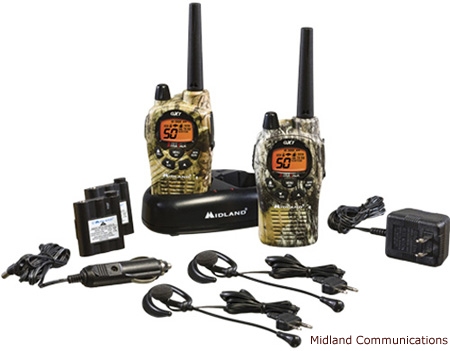
GMRS / FRS handheld radios are commonly available and come with a variety of features. Desirable options include vehicular chargers, the ability to utilize standard AA or AAA batteries to replace depleted rechargeable batteries, and the ability to attach headsets and earpieces. Radios manufactured under "Family Radio Service" (FRS) standards do not require licensing.
There are a few issues with these radios that need to be considered.
- Their effective ranges under real-life conditions are often far less than the distances advertised under optimum conditions. Transmission range can also be greatly impacted when utilizing these radios from inside vehicles or certain buildings.
- They are prone to adjacent channel bleed-over. Different teams using GMRS / FRS while operating in the same general area need to utilize channels that are numerically distant from each other (e.g., Team A on Channel 4 and Team B on Channel 10, etc.)
- In some areas FRS radio channels may also be used by higher power GMRS radios and repeaters that could interfere with on-scene communications. An understanding of area band usage could guide better pre-planning of channel assignments.
- Some FRS handhelds have privacy code features with names such as "Private Line" (PL) or "Channel Guard" (CG.) These features tend to block transmissions on the same channel from radios that are not using the receiver's same privacy code. It's generally desirable to turn these features off when personnel are using an assortment of different make or model radios in order to ensure that everyone receives everyone else's transmissions.
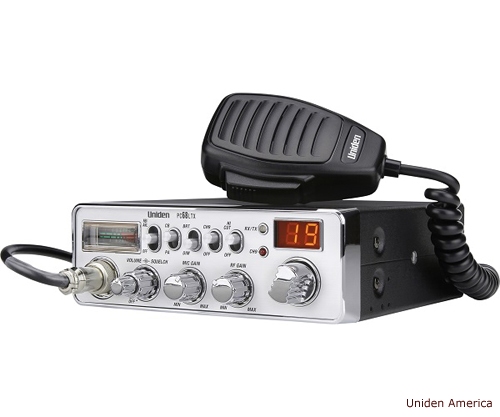
Citizens' Band (CB) radios are readily available and no licenses are required. Some units also come with options to receive weather broadcasts and warnings. However there are issues that can significantly affect the performance of these radios that should be considered when purchasing and installing this equipment.
- Technology is important, even with this "low-tech" AM radio service. Effective signal propagation and suppression of fringe noise require a well-engineered unit. It's best to research performance data produced by user groups before selecting a radio make and model.
- Antenna designs can be extremely critical. CB operates on a relatively low frequency (27 MHz) which in turn equates to a rather long wavelength. An optimum CB antenna is 102 inches (259cm or 8½ feet) which may not be desirable to install on vehicles that are used more for personal activities rather than for emergency responses. Shorter antenna options are available, each type having distinctive advantages and limitations. Some discussions of those points are provided under "Antenna Tips."
- Antenna placement can be important, particularly with respect to shorter antennas as they rely on the metal of the vehicle to create a "ground plane" that in turn affects transmission propagation.
- Antenna tuning is important, not only for improved performance but to prevent damage to the radio from "standing" waves that are reflected back to the radio. Every installation will produce a different standing wave ratio (SWR.) SWR can be minimized by adjusting the length of the antenna whip while observing readings on the SWR meter on radios so equipped or while using an external SWR meter.
CB radios are limited by law to a maximum transmission output of four (4) watts. As a result, the most significant factors affecting transmission performance involve the design and placement of antennas.
The most effective antenna is a 102 in. half-wave whip, however such a length can be problematic with many vehicles. Another practical antenna is base loaded, having a coil built in to the base that makes up for a shorter antenna length. There is less antenna exposed to radiate transmissions, however base loads can provide a good wave match to the radio. Base loaded antennas are often favored for roof mounts as the whips are very flexible if they strike low branches and other obstacles, and their shock resistance can be increased by installing a spring between the base coil and the whip.
The best location for a base loaded antenna is the center of a metal cab roof.
This antenna is manufactured by PC TEL (formerly Maxrad,) a manufacturer of public safety antennas.
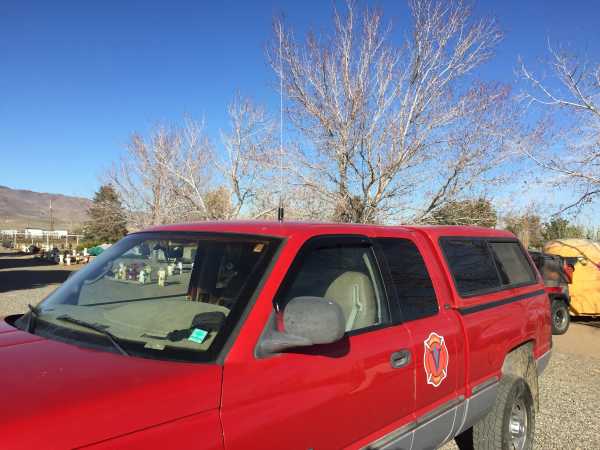
Helical fiberglass antennas perform well in locations where roof top mounts are not practical. While they are not very flexible if they strike overhead objects, their helical design places more of the radiating conductor at a higher elevation on the antenna whip, improving SWR and range.
This helical fiberglass antenna is made by Fire Stik and has a tunable slug in the tip (under the red cap.)
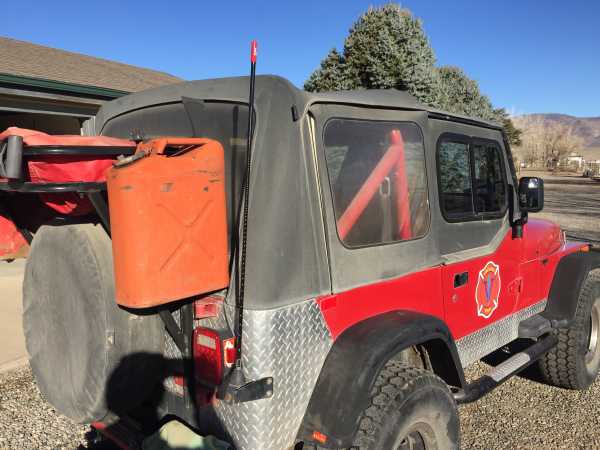
A 102-inch steel whip offers the best range of the various mobile antennas. It can, however, be a bit unwieldy in some applications.
The 102-inch whip should be released from its clip and be vertical for efficient performance.
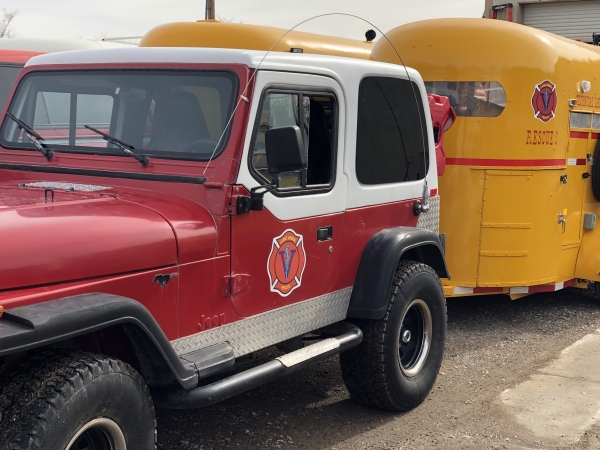
There are also "under cover" antennas that can double as CB and AM/FM radio antennas however the AM/FM mounts on most newer vehicles are too lightweight to handle high quality multi-purpose antennas.
After trying various antenna styles, we found the most practical mounting configuration to be the "New Motorola" or NMO style. This mount only requires drilling a 1/4 in. hole in the cab roof and any NMO compatible antenna will attach to it, regardless as to frequency used or brand. The exterior of the NMO mount is nearly flush so the antenna can be detached if the vehicle is sent through a car wash. Plus the antenna can be kept removed until needed if the vehicle is parked in a garage with a low opening.
A practical mounting location is often right next to the dome light, accessible by lowering the fixture.
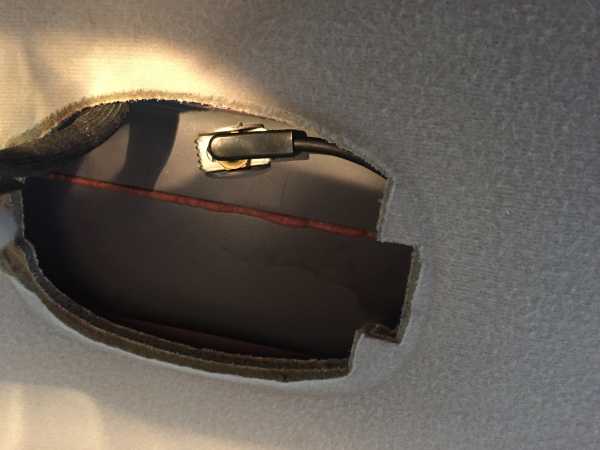
The NMO mount itself is relatively flush and if properly installed is waterproof.
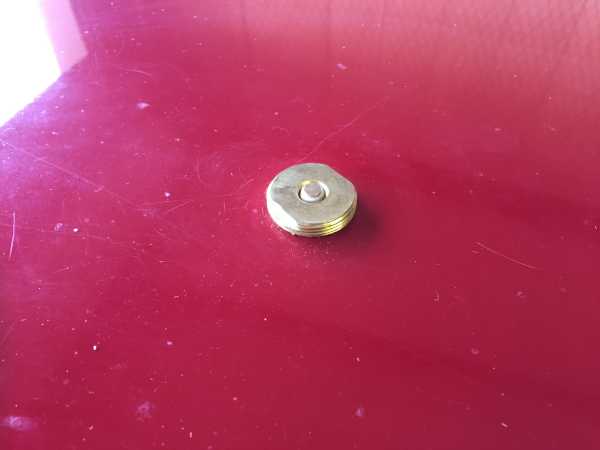
For non-permanent radios, the wiring can already be in place for quick hookups.
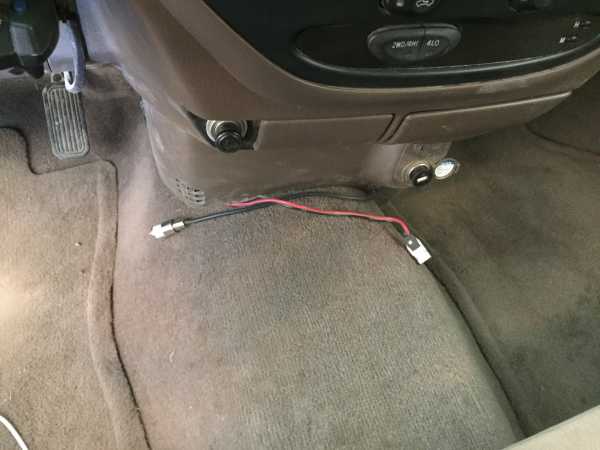
Two quick connections. In service and ready to go in about 30 seconds.
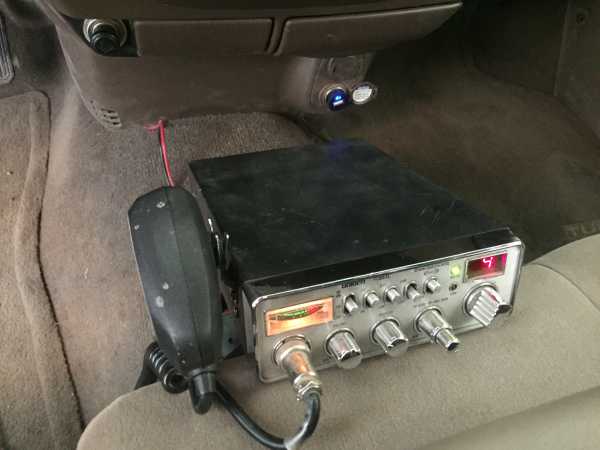
Issues involving Magnetic Mounts.
Magnetic antenna mounts are also practical and versatile, however the magnets have to be strong enough to hold the antenna fast at highway speeds, especially while driving into headwinds. Also, the strength of magnet mounts can vary according to the quality and thickness of the vehicle's metal roof.
We have had good luck with Cobra's magnetic mounts and we also use NMO magnetic mounts with PC TEL base loaded antennas. One advantage of magnetic mounts is that "jump kits" of radios with cigarette lighter power cords and magnetic antennas can be set up for immediate deployment on any vehicle, including agency vehicles that may be used by strike team or task force leaders.
A CB "jump kit" with magnetic antenna on a Strike Team leader's agency vehicle.
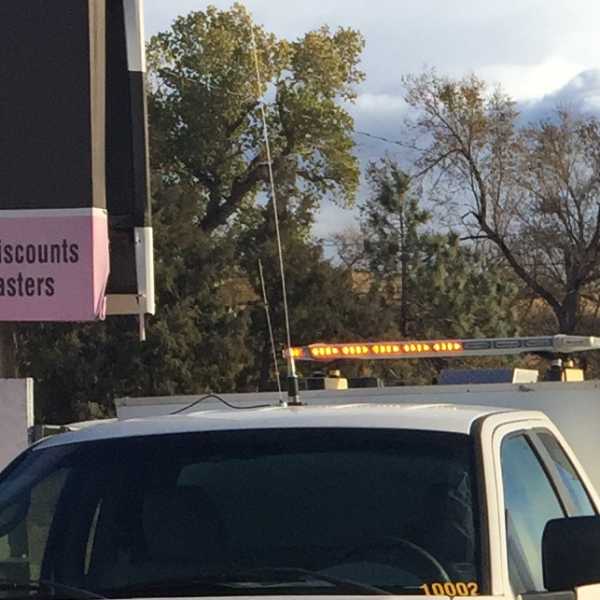
For the record, we have tried various makes and models of antenna equipment. We clearly got what we paid for and the cheaper gear was replaced fairly rapidly.
Auxiliary responders and specialty teams need to be integrated into Incident Communication Plans. By their very nature, these responders and teams often involve use of qualified spontaneous responders as force multipliers and to provide logistic support. Plans should consider how best to include these additional resources so they remain "connected" throughout the incident to ensure a means for direction and accountability.
High tech systems, including mobile cellular networks, can and do occasionally fail during significant emergencies. Some operations may take place outside of network coverage areas. Some direct means of keeping everyone within a functional communications system is essential for operational control and accountability. Free-lancing and having response elements become "lost" during serious incidents are not desirable occurrences.
Relevant communications issues should be a part of overall pre-incident planning as well as elemets of the various teams' internal response plans.
| 











